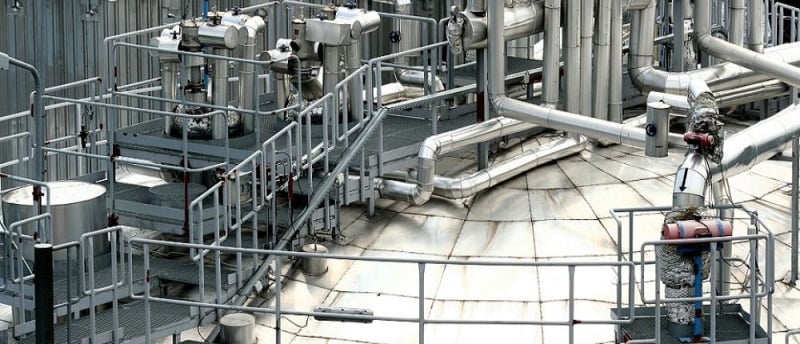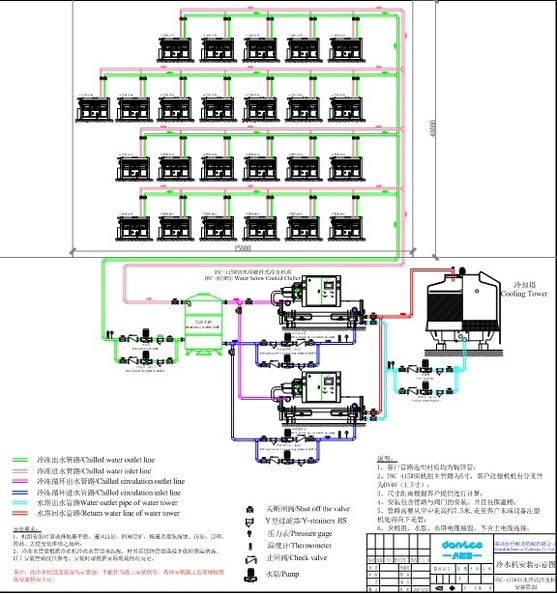Central Cooling System
Central Cooling System
4/16/20243 min read


Central cooling water system is suitable for industrial cooling in cooling, constant temperature and other fields, centralized control, double cycle cooling, point, surface, energy saving, flexible use of space, is an indispensable equipment for modern industry to improve production efficiency and improve production quality.
The system adopts centralized refrigeration, centralized control and frozen water concentration transportation mode. Intelligent refrigeration, energy saving, flexible use of space.
The system can realize the precise control of temperature, flow and pressure to achieve the maximum cooling effect. Based on standard equipment technology, it is a personalized solution to meet the different needs of customers on the basis of constant expertise.
Super cooling, quiet saving, unique new design of stainless steel water tank opening mode, easy cleaning, maintenance.
Safe and reliable, with current overload protection, high voltage and electronic delay and other perfect safety protection devices, abnormal indication system.
Catastrophic Failure
• pump failure
Minerals introduced by tower air and supplemental water can damage water quality by destroying biological, chemical and particulate pollutants. The main maintenance problem of the pump is that the water quality problem requires the replacement of seals. Prudent system design includes the preparation of a backup pump - preferably a pump solution that allows automatic transfer to the backup pump in the event of a failure to keep the system running. One solution is a "two-arm" pump that combines two pumps in a single housing.
• Valve setting is not correct
A thorough understanding of cooling system design is also important. Often, the system fails due to improper valve operation. It either opens when it shouldn't, or it opens too far or not far enough. Valves may operate unexpectedly or even fail internally. In any case, you need to have a complete system diagram where the valves and components are identified and their locations noted for quick reference.
• Filter clogged
Water quality problems can lead to clogged filters and fouling of heat transfer surfaces. Filters should be checked periodically or equipped with an alarm to indicate cleanliness.
• Pipes are broken or leaking
The flow problem is a burst pipe. If the main connector bursts, the system empties quickly, flooding operators and equipment. Failure is easy to see. It is often difficult to determine why. The most common is a lack of proper support, such as a coat hanger failure. All piping must be supported to minimize stress. In addition, some piping materials are more prone to failure than others. The welded steel wire is stronger than plastic wire and more resistant to fatigue caused by "water hammer" (transient pressure spikes). However, steel does not corrode, whereas plastics do not. The solution to this problem is to operate the system with a program that prevents water strikes.
Chiller failure
• High pressure closing condenser:
In either case, a "high voltage" safety switch is activated. The cause must be corrected before manually resetting the switch.
• Low pressure (" frozen state ")
A "low pressure" refrigerant alarm indicates that the compressor does not have enough gas to compress into the condenser. There are multiple possible causes, but the common problem is a refrigerant leak. In any case, low refrigerant pressures require a qualified technician to locate and repair the problem. The "low pressure" alarm can be reset automatically without operator intervention, making it possible for the alarm to occur again as the operation continues.
• Compressor failure
Chiller compressor failures are rare, but can be predicted by observing system operation. Frequent on/off cycles of a compressor usually occur before a fault occurs. The real cause may not be the compressor, but the control system or other system components. This problem will require professional technical help. Note that for applications, low load or overloaded coolers may cause premature compressor failure due to frequent on/off cycles.
Performance Failure
• Processing Windows become narrower
• Increased cycle time
• Product quality differences
• Process instability
• Control instability
• Unable to reach factory production capacity
Catastrophic system failures are easily identified, while corrective action is relatively predictable and straightforward. A more frustrating cooling system disaster can occur when process performance gradually degrades due to less obvious cooling system problems. Inevitable problems must be prepared with appropriate diagnostic tools before they occur.
It is a good policy to check and consult the cooling system before a failure occurs. The system troubleshooter must have a thorough understanding of the cooling system. Some system vendors provide engineering services, such as engineering drawings of cooling systems, as well as staff training and operating instructions.
System components that are too small or too large usually cause or exacerbate problems. System loads need to be tabulated to determine their cooling capacity limits. A "load study" can be performed to calculate the thermal load associated with each molding machine in the plant. Some processors find it valuable to periodically record critical system parameters for trend analysis and schedule predictive maintenance.




